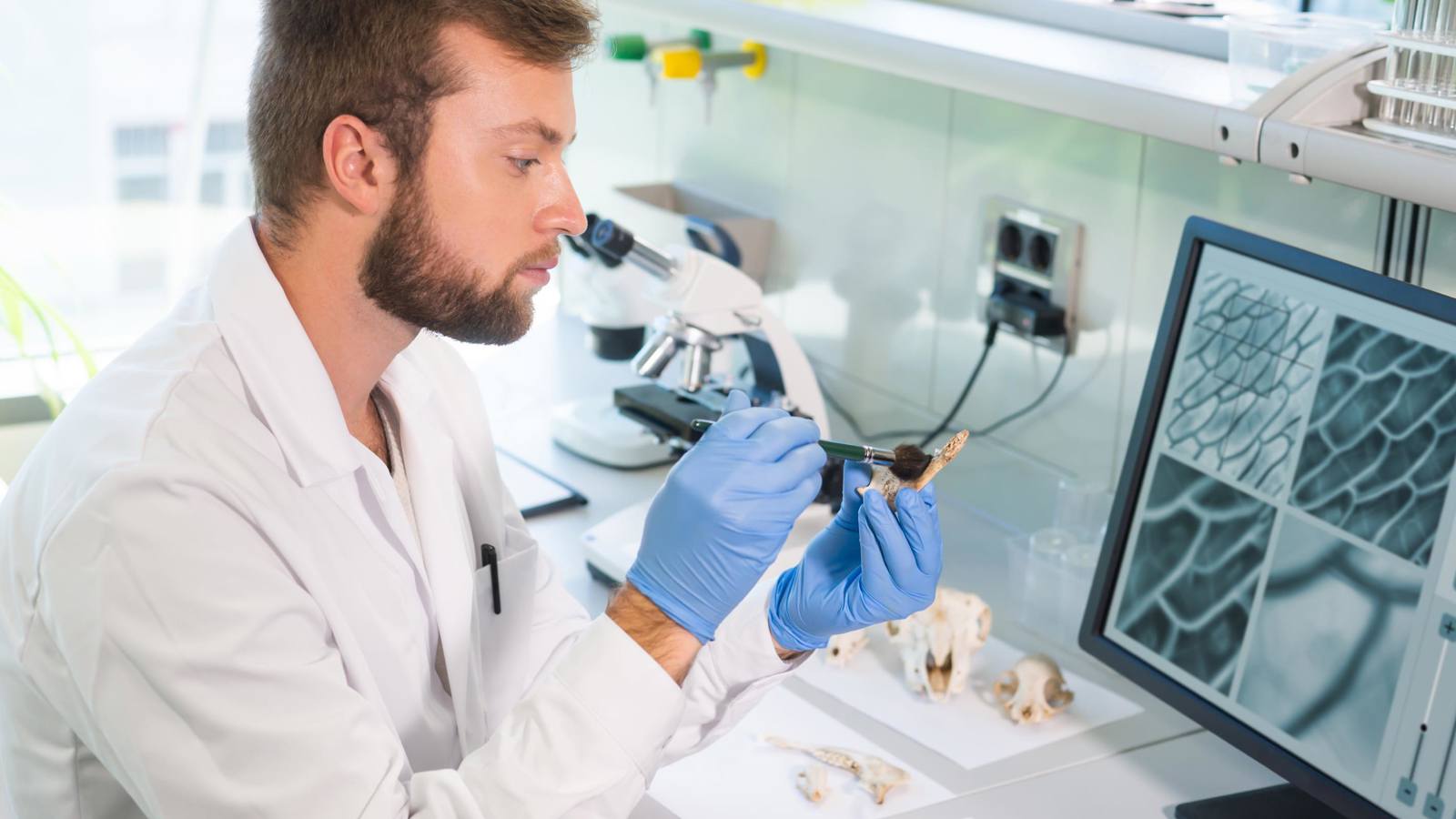
Understanding the texture and properties of bone using a Texture Analyser

Understanding the texture and properties of bone is crucial in biomedical research, as it helps in identifying diseases, developing therapies, and designing medical devices. In the veterinary world, bone property measurements are used to inform on animal ageing and the effect of diet. Researchers rely on various techniques and tools to study bone texture and properties, one of which is the use of a Texture Analyser.
A Texture Analyser is a sophisticated scientific instrument used in biomedical research to measure and analyse the physical properties of materials, including bone. It allows researchers to understand how different factors such as density, porosity, and composition affect the mechanical behaviour of bone. By analysing these properties, researchers can gain insights into bone structure and function, which ultimately helps in diagnosing and treating bone-related diseases.
One crucial property that researchers study using a Texture Analyser is bone strength. Bone strength refers to the ability of bone to withstand mechanical stress, and it plays a vital role in determining the overall health and functionality of the skeletal system. By subjecting bone specimens to controlled mechanical forces using a Texture Analyser, researchers can measure the maximum force required to cause bone fracture. This information is critical for diagnosing conditions like osteoporosis, where bone density and strength are significantly compromised.
Another important property that researchers examine is bone stiffness or elasticity. Bone stiffness refers to the resistance of bone to deformation when subjected to external forces. It is a key indicator of bone health and is affected by factors such as age, disease, and nutrition. Using a Texture Analyser, researchers can measure the elasticity of bone by applying controlled compression and tension forces. This information helps in understanding the biomechanical behaviour of bone and can aid in the development of treatments for conditions like osteoarthritis.
Typical research examples of how a Texture Analyser has been used in this field:
- Effects of Fish Oil and Dietary Antioxidant Supplementation on Bone Health
- Impact of genetic and pharmacologic inhibition of myostatin in a murine model of osteogenesis imperfecta
- New strategies for the decellularization of biological tissues
- Dietary n-3 PUFA content as a modulator of the femur properties in growing pigs
- Chronic ethanol consumption does not reduce true bone density in male Wistar rats
- Sevelamer restores bone volume and improves bone microarchitecture and strength in aged ovariectomized rats
- Influence of the zinc and fibre addition in the diet on biomechanical bone properties in weaned piglets
By utilising this technology, researchers can ultimately develop better diagnostic techniques, therapeutic strategies, and medical devices for bone-related diseases and conditions. The continuous advancements in Texture Analyser technology will further enhance our understanding of bone and empower researchers in their quest for innovative solutions to improve bone health for both humans and animals.
Learn more about other material properties a Texture Analyser can measure.
See case studies of how industry leaders are already using the Texture Analyser to get ahead of the competition.
Request a demonstration of any of our instruments. Please get in touch, we’d be happy to show you how our Texture Analysers could work for you.






